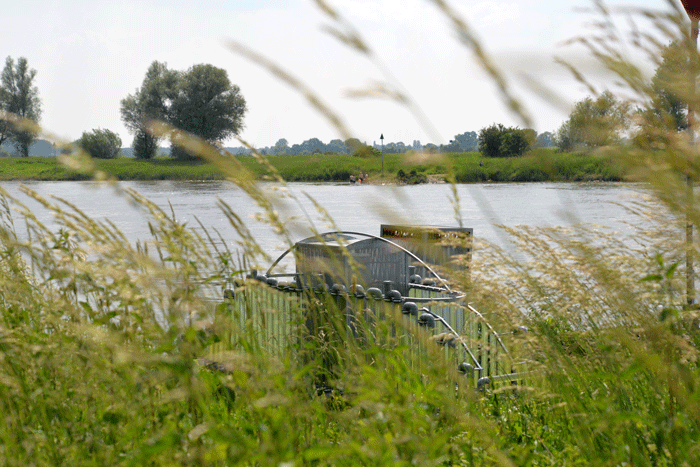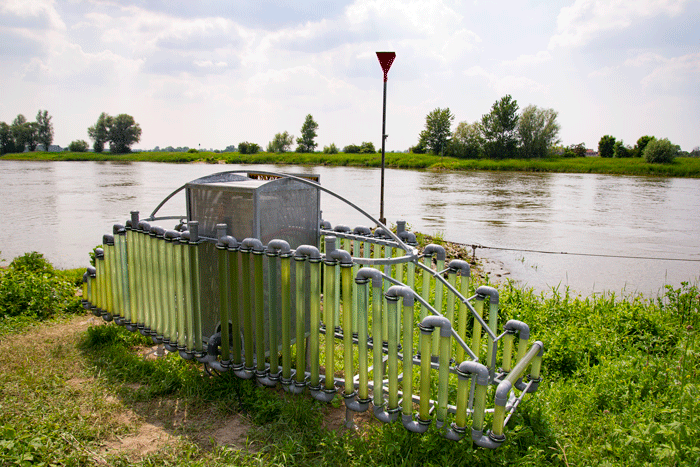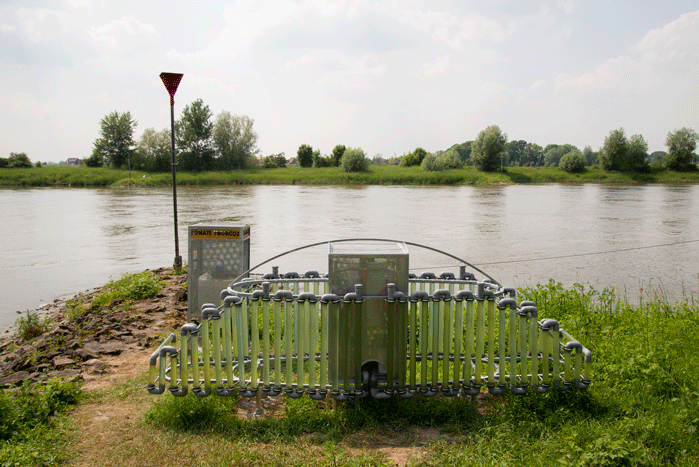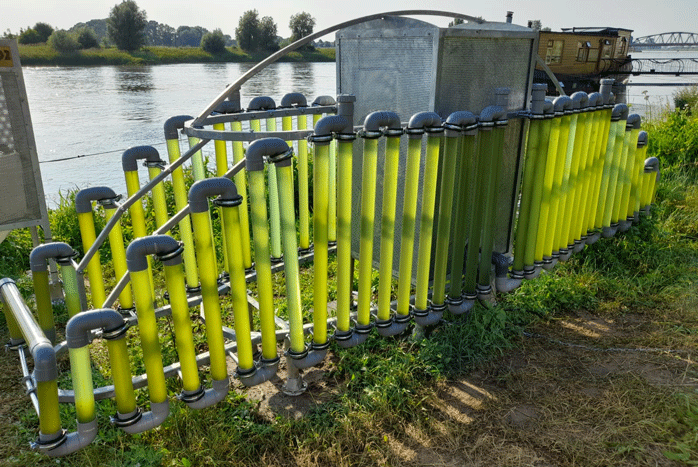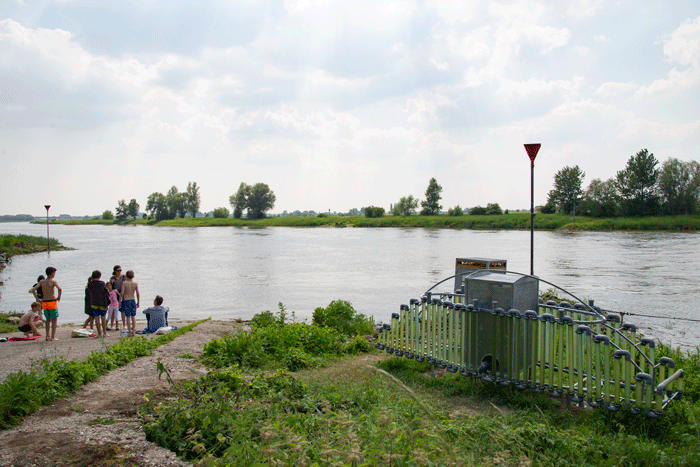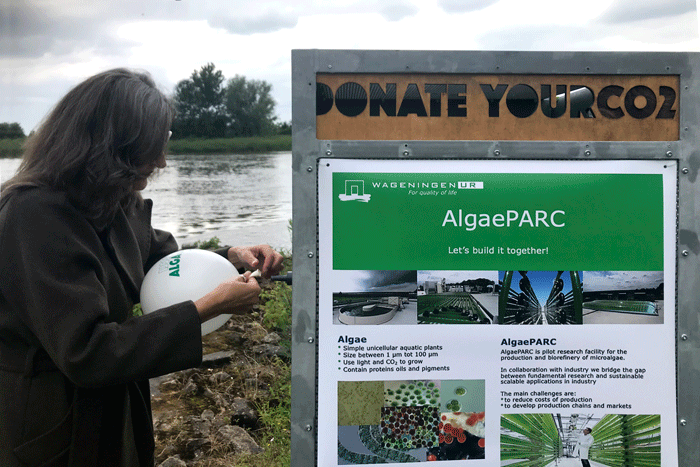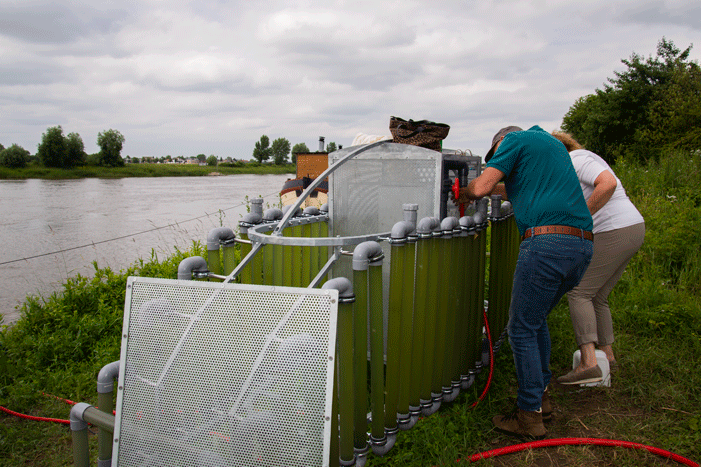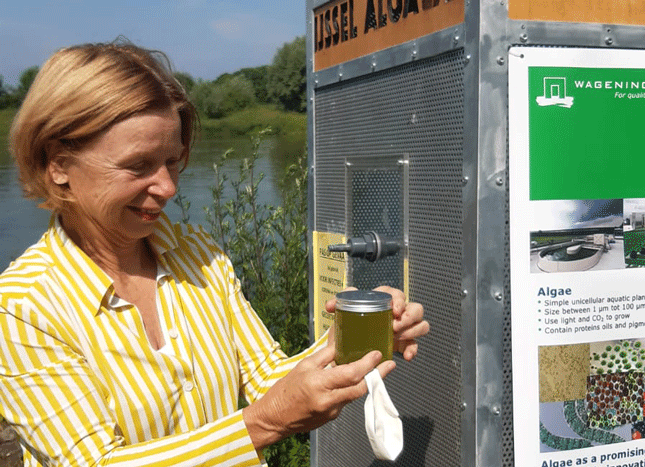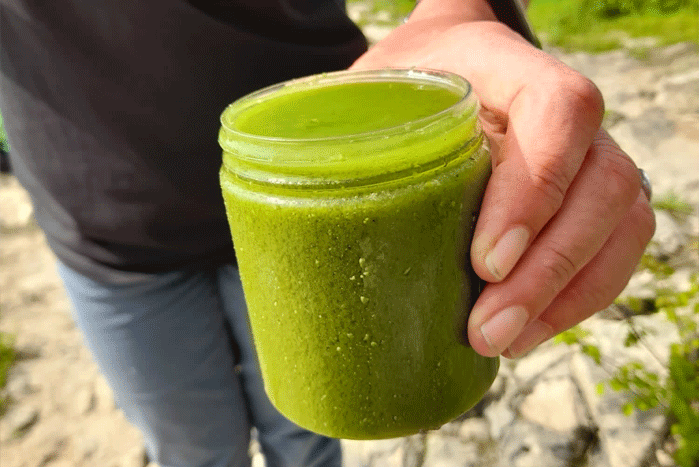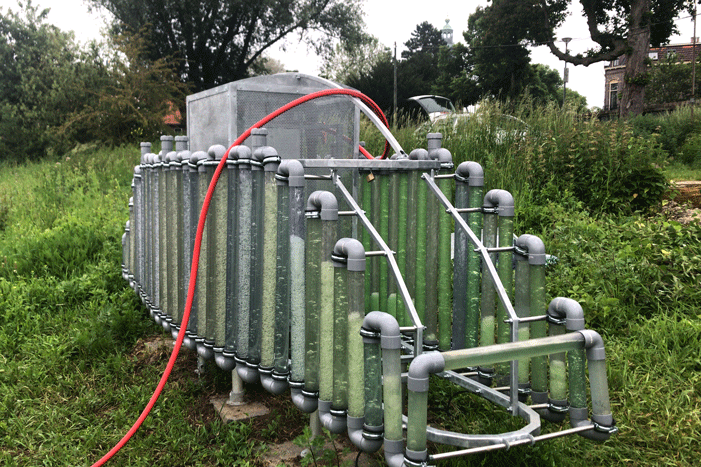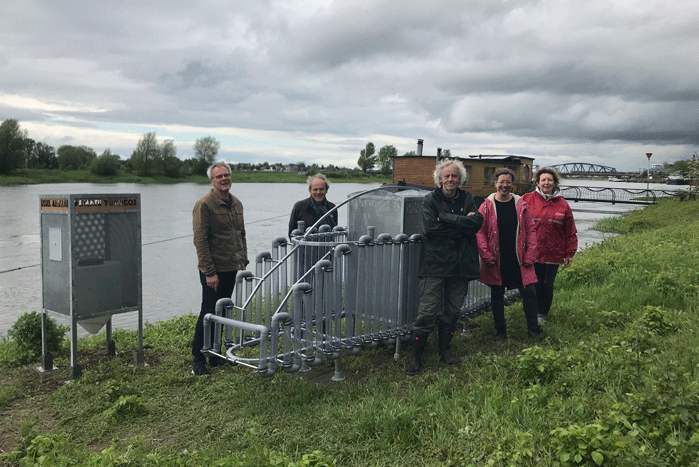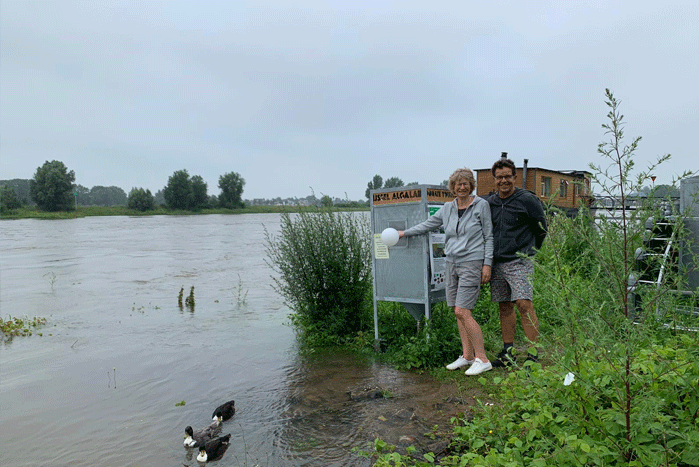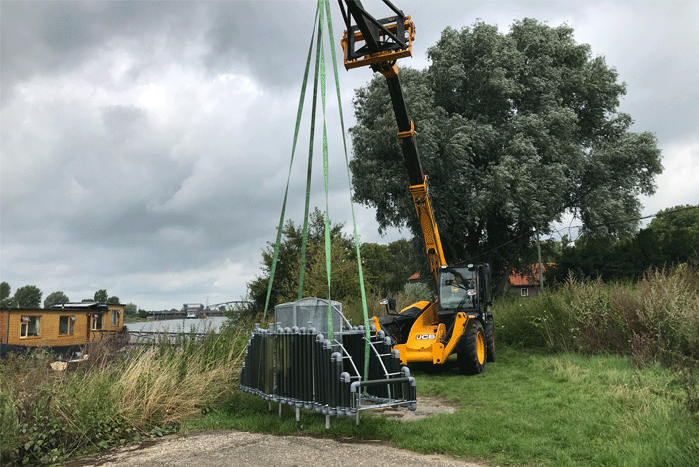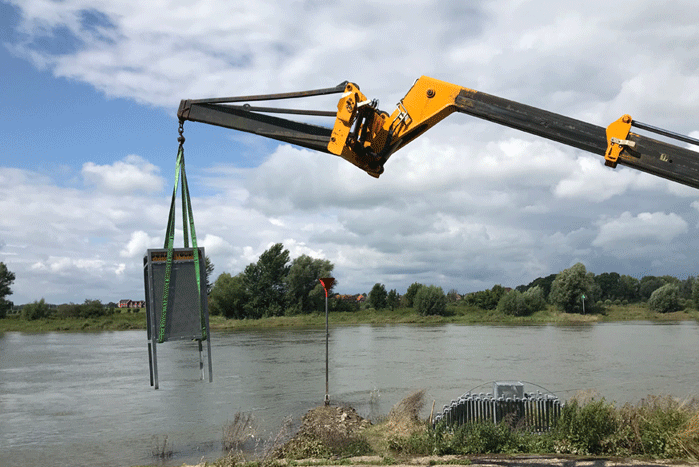IJssel Alga Lab
IJssel Alga Lab
“IJssel Alga Lab” is a laboratory-like setup where I grow algae from the water of the IJssel river. This project was developed for the IJssel-Biennale 2021.
The algae growth takes place in a complex pipe system, whose form is based on the shape of a perch, a fish that is common in the IJssel.
Like all plants, algae convert carbon dioxide (CO2) and water into carbohydrates and oxygen through photosynthesis using sunlight. The light is 'captured' with the help of pigments, of which green chlorophyll is the most known. That is why water with a lot of algae turns green. For the process of photosynthesis, the algae need, among other things, carbon dioxide (CO2) and nutrients such as nitrate and phosphate. The installation itself collects CO2 from the air, but as a visitor you can also donate your own CO2 (by inflating a balloon) which is collected in the harvesting cabine.
The algae are harvested twice a month. After each harvest, the system is refilled with IJssel water. The end-product of this nursery is fertilizer with which plants can be fed. If you donate CO2, you can take this in exchange, to thank you.
With this installation I want to make visitors aware of a necessary ecological cycle, in which sunlight and the greenhouse gas CO2 are converted into plant food and oxygen. Although algae technology by itself cannot solve the climate problem, this art project is a “suggestion for a balanced relationship between people and the environment.”
IJssel Alga lab is technically supported by Wageningen University & Research.
Special Thanks to operational manager Rick Wieggers and Professor Maria Barbarosa, technician Ranny van Raaij, to IJssel-Biennale and all the volunteers involved!
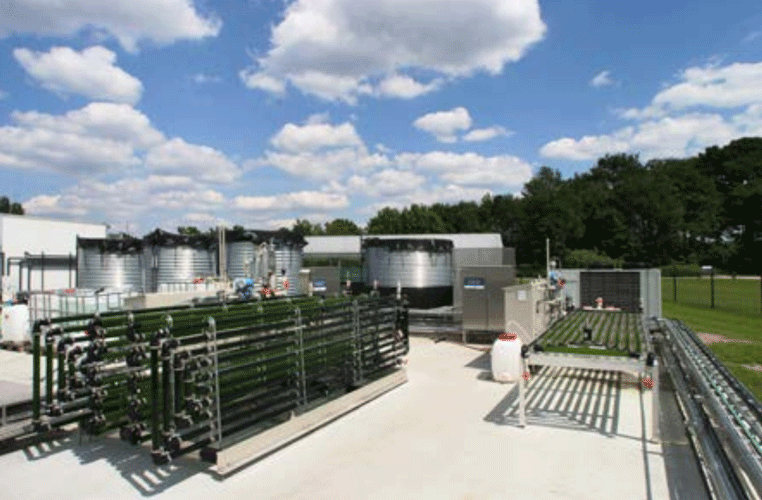
Photosynthesis performed by microscopic plants was responsible for the formation of our fossil oil reserves, millions of years ago. As currently these reserves are declining, we are again looking at the potential of photosynthesis to (re)capture inorganic carbon and convert it into the organic molecules that are the feedstock of all carbon based food and fuel available today. Microalgae and cyanobacteria have great potential as a photosynthetic catalyst as they have some important advantages over traditional agricultural crops. For example, the predicted areal productivities of microalgae are much higher and can be obtained without the use of arable land. Many algal species are salt tolerant and therefore sea water can be used for cultivation.
Microalgae, also called phytoplankton by biologists, are very small plant-like organisms between 1-50 micrometres in diameter without roots or leaves. Together with the seaweeds (macroalgae or large aquatic plants), microalgae are part of the so-called aquatic biomass. Microalgae are very common (hundreds of thousands species exist) and occur both in freshwater and seawater where they form the basis for most food chains. Most species contain chlorophyll, use sunlight as an energy source and convert carbon dioxide (CO2) into biomass. In this process of photosynthesis the algae produce oxygen (O2). On a global scale microalgae produce more than 75% of the oxygen required for animals and humans.
The range of products that can be produced with microalgae and cyanobacteria varies from fine chemicals, such as pigments and poly unsaturated fatty acids, to products that are suitable for bulk applications, such as starch, protein and lipids. In recent years more than 15,000 new chemical compounds were discovered in algae, and the list of products made from algae is expanding steadily.
Microalgen: het groene goud van de toekomst?
Microalgae: the green gold of the future?
http://www.groenegrondstoffen.nl/Serie_GG.html
Algen – de groene belofte
http://www.biomaatschappij.nl/product/algen/
